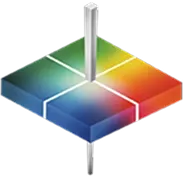Tooth Whitening
Tooth whitening is the most requested cosmetic dental procedure in the United States, with dentists seeing a 300% increase in whitening procedures since 1996. Whitening procedures can take place in the dental office, at home using dentist-provided materials such as custom-made trays and bleaching gel, or using over the counter products like whitening strips available at the local drug store. All of these products must find an ideal balance between tolerability and effectiveness to allow consumers to experience aesthetic improvements with minimal irritation.
Measuring Product Effectiveness with Spectrophotometry
In order to develop the most effective whitening products, researchers employ careful color monitoring techniques to gain accurate data regarding color change capabilities and discover how a product should be used for the best results. Precise color measurement allows consumers to have a realistic understanding of the results they can expect from a particular product and make purchasing decisions that give them what they are looking for.
Many clinical studies use dental shade guides to determine color change, but as a 2011 study on Nite White 10% bleaching gel points out, this is “not very reliable and highly subjective. Variables such as observer’s experience, eye fatigue, ambient light conditions and the background against which a tooth is compared may lead to inconsistencies.” Teeth also present particular challenges for color evaluation due to their variable thickness and texture, and require specialized measurement tools to account for these factors. In order to produce precise, accurate results, industry best practices recommend the use of spectrophotometric assessment. Spherical spectrophotometric technology compensates for light distribution variation caused by texture and thickness to produce reliable readings of tooth color and allow for true measurement of whitening effects on enamel coloration. With the detailed information provided by spectral analysis, dental product manufacturers can modify their ingredients to create more effective formulations and meet the whitening needs of their customers.




